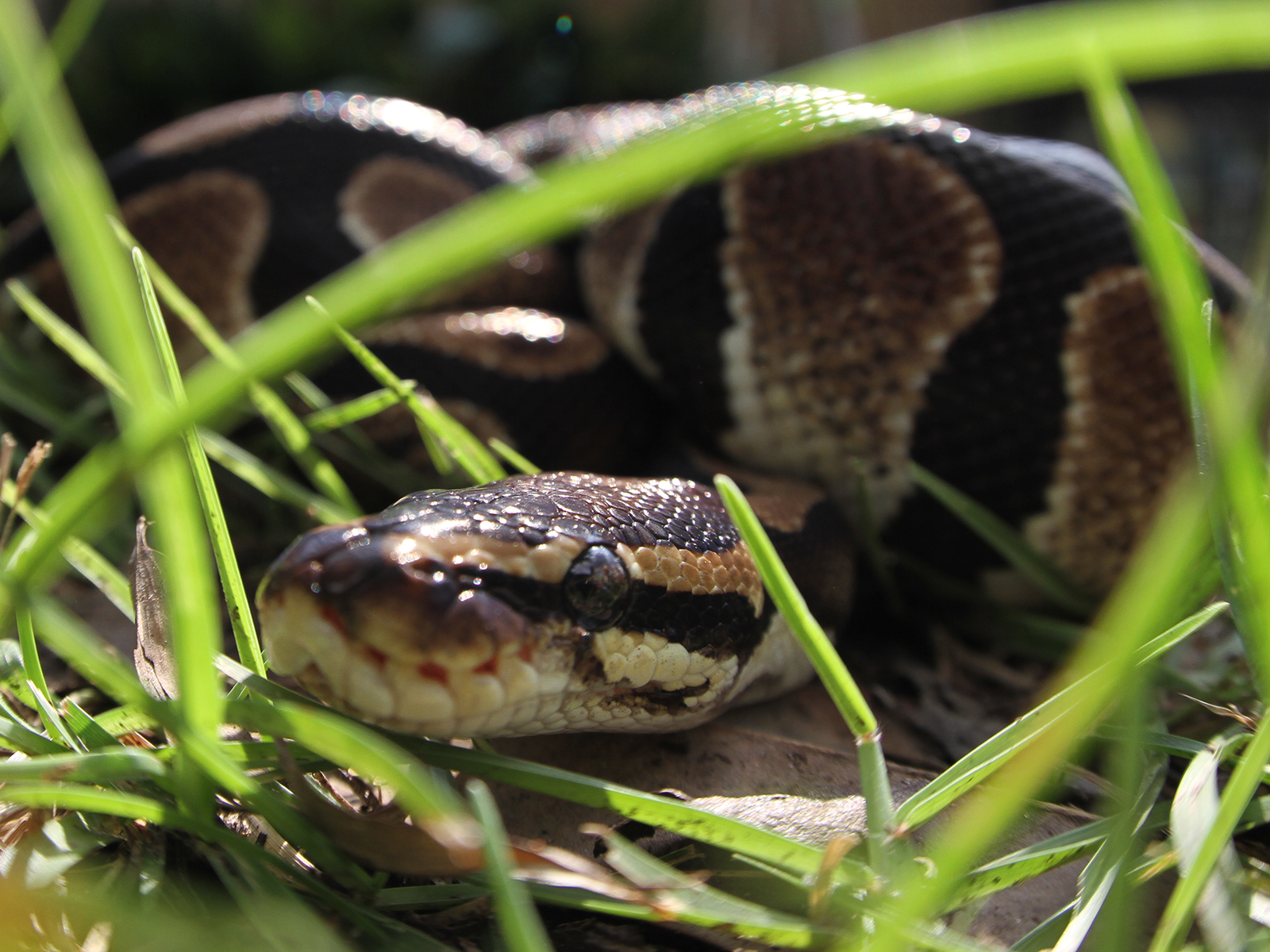Ball Python
Python regius
Class
Reptilia
Order
Squamata
Family
Pythonidae
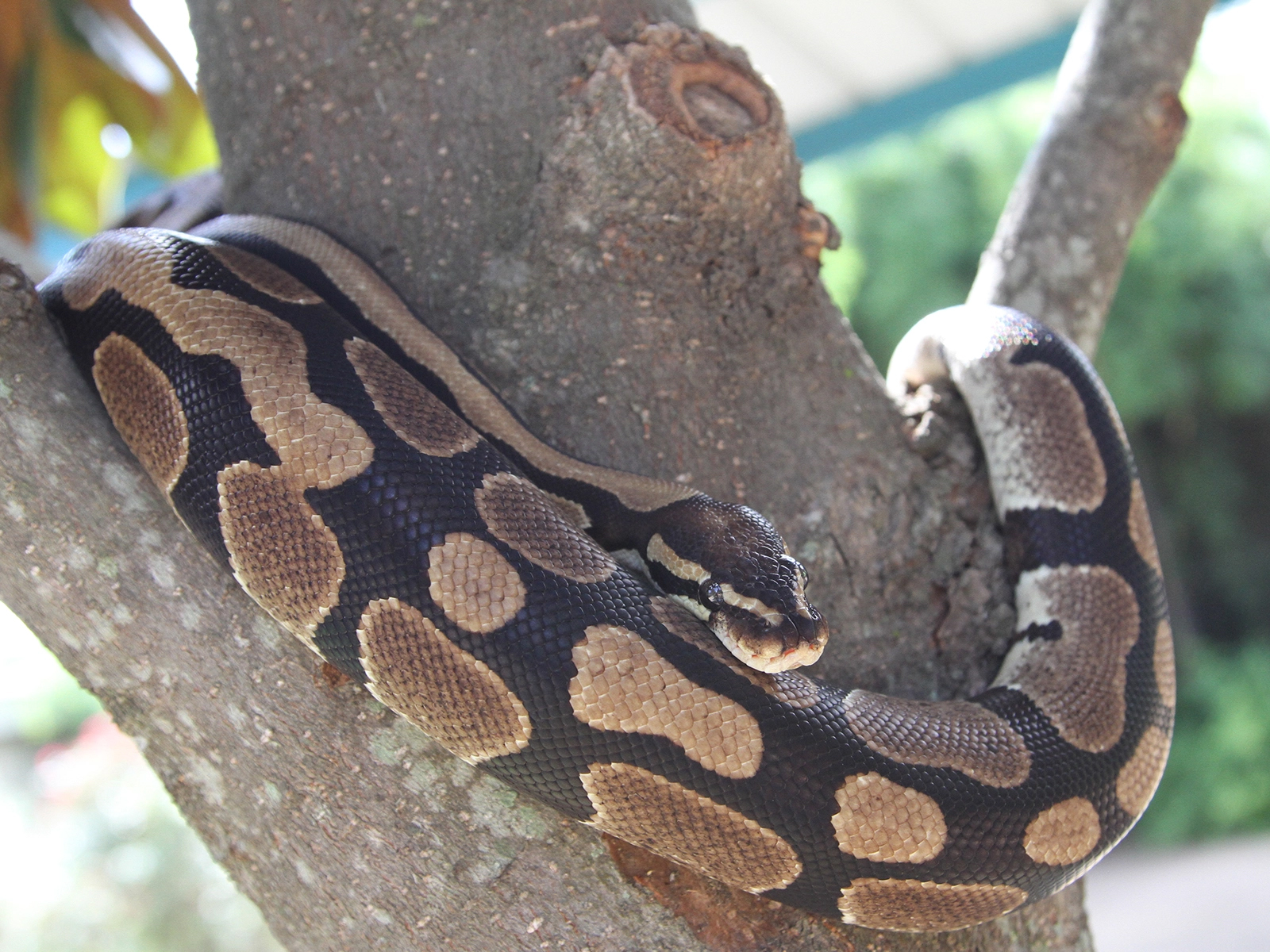
Reptilia
Squamata
Pythonidae
West and central Africa
Length: 3 - 6 ft
Weight: 4 - 9 lbs
Grasslands, savannahs, and sparsely wooded plains
Clutch: 4 - 11 eggs
Incubation: 75 - 80 days
Rodents
Least Concern
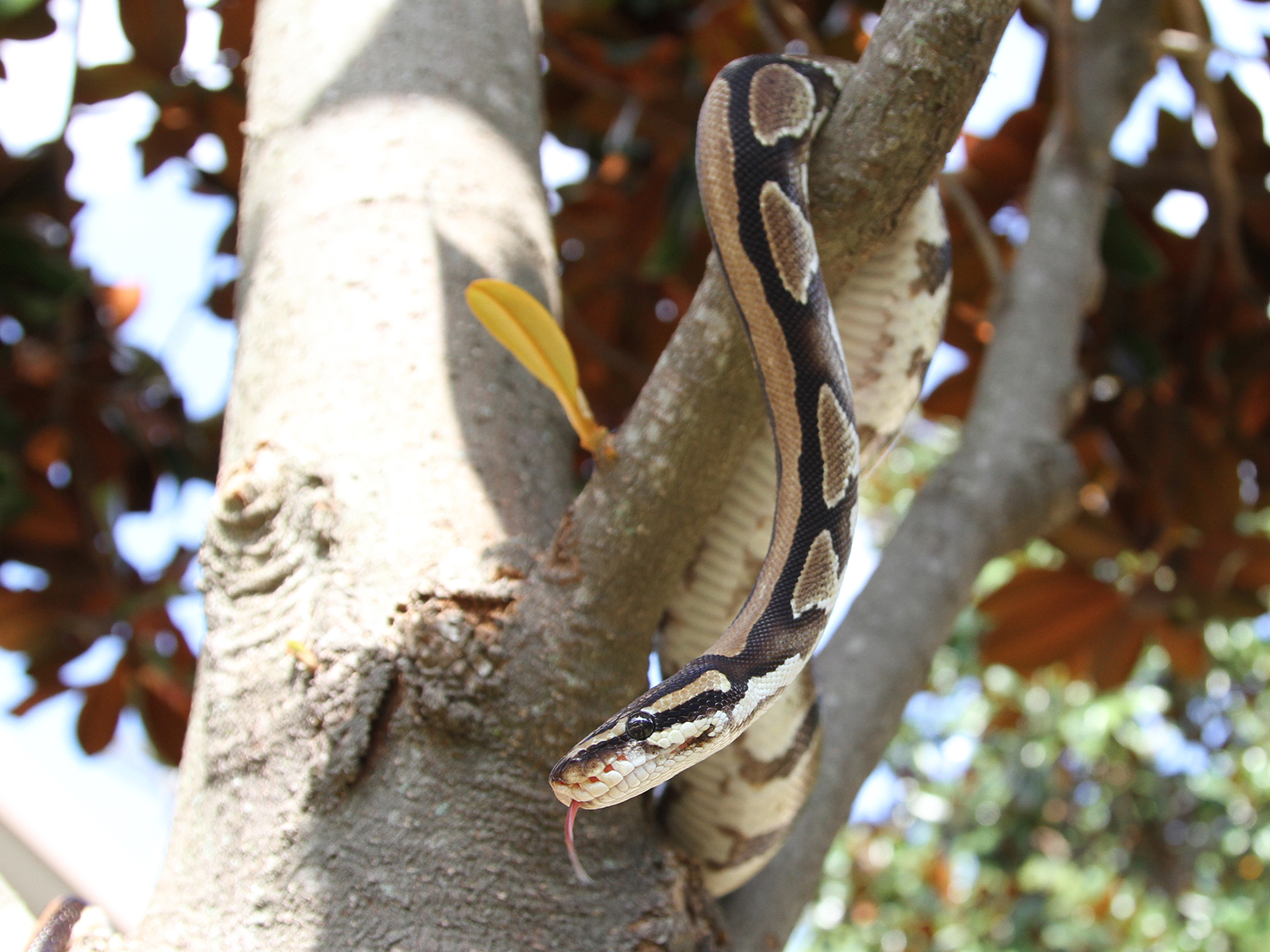
The ball python is also known as the royal python. This snake is nocturnal (active at night) and solitary (lives alone). They have 100 - 150 sharp teeth that curve towards the back of their mouth.
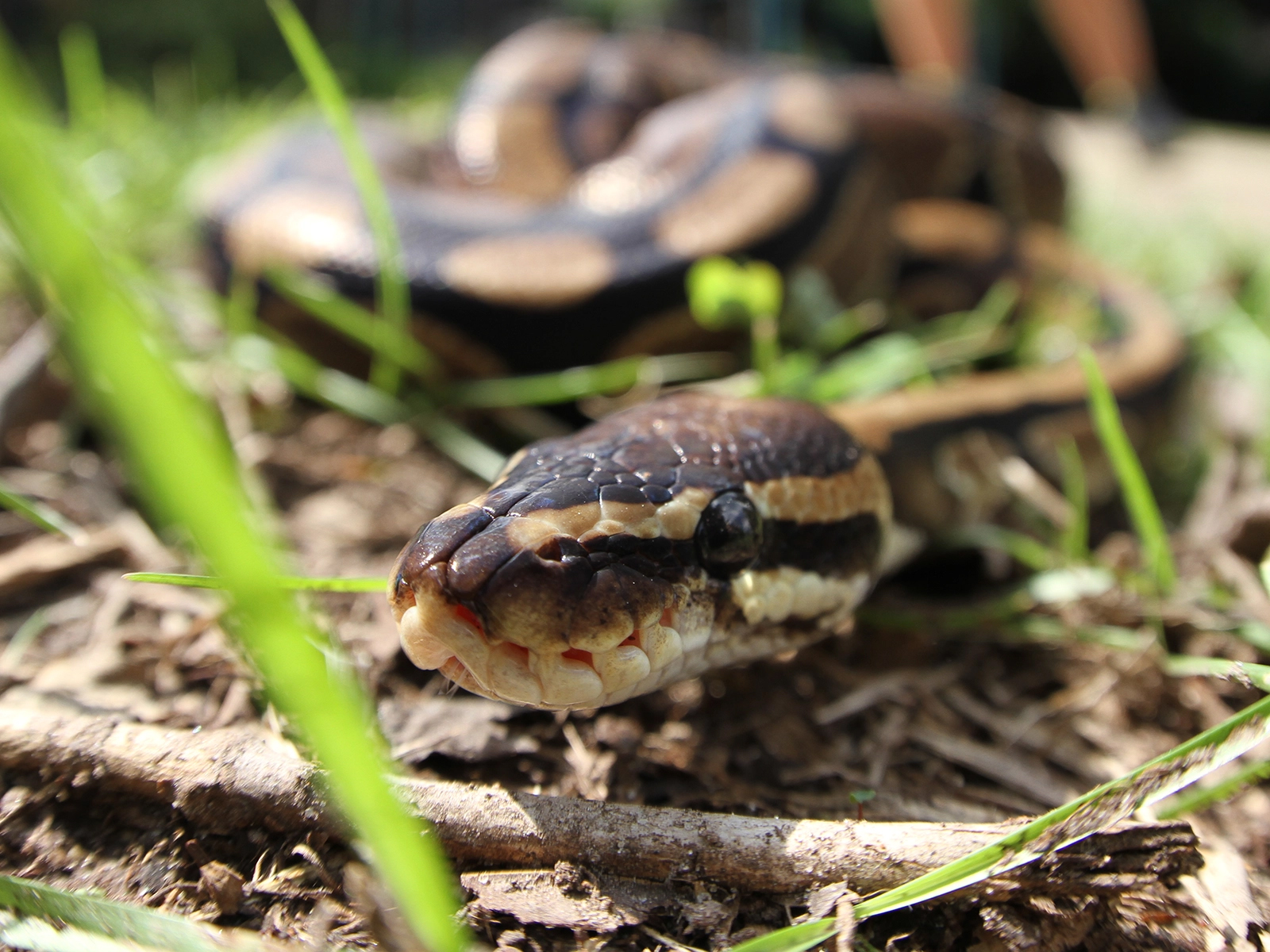
Like most pythons, they are good climbers, but they are usually seen on the ground. They will coil into a tight ball (hence the name) with the head tucked between the coils to defend themselves and protect their head.
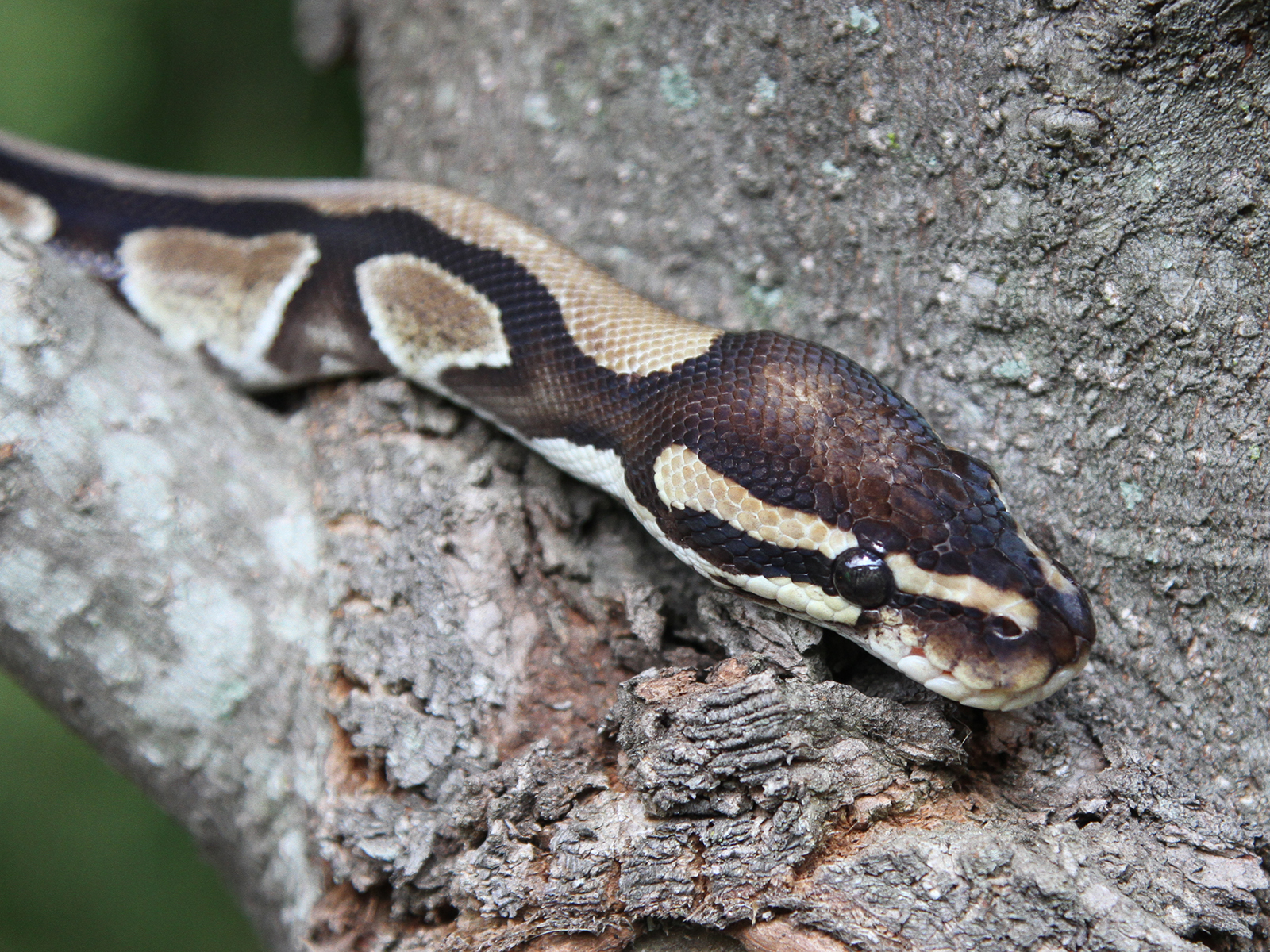
The biggest threat to the ball python is the international pet trade. While the suspected population decline is not large enough to warrant threatened status, the trade of this species should still be carefully monitored and the numbers exploited should be reduced. This species is also poached for meat and leather.
Choose your pets wisely. Do your research before bringing an animal home because exotic animals don’t always make great pets. Being a pet owner is a serious commitment to the animal's entire lifespan, which can exceed 30 years. This means embracing the responsibility to provide a secure and enriching life through impeccable husbandry, including a spacious enclosure with proper temperature gradients and high humidity for healthy shedding.
Never purchase a wild-caught ball python. Adopt from a rescue if possible, or buy only captive-bred animals from reputable breeders who prioritize the snake's welfare and genetic health over mass production. While most pets are captive-bred, some are still imported, and buying a wild-caught snake directly contributes to the depletion of wild populations.
Tom January 2002
Jerry July 1992
